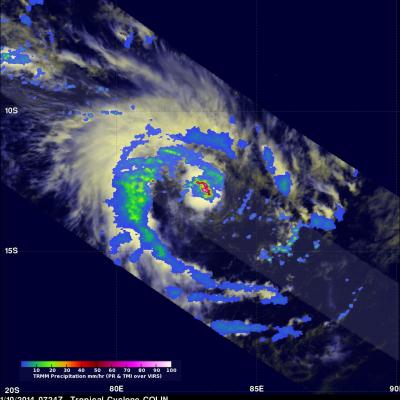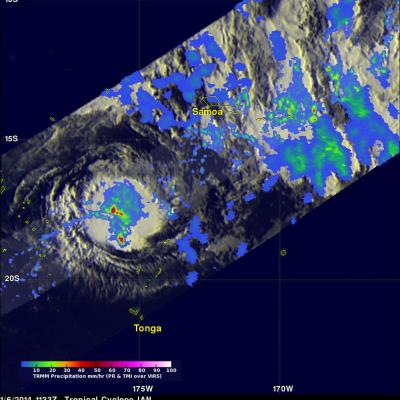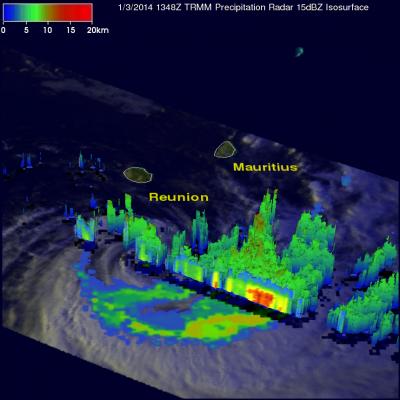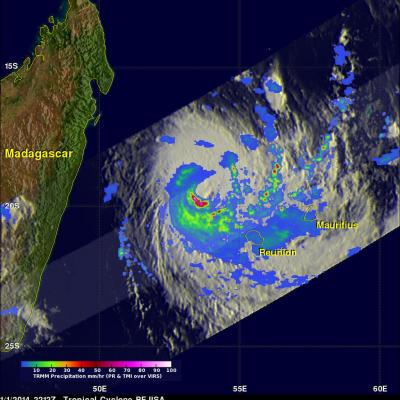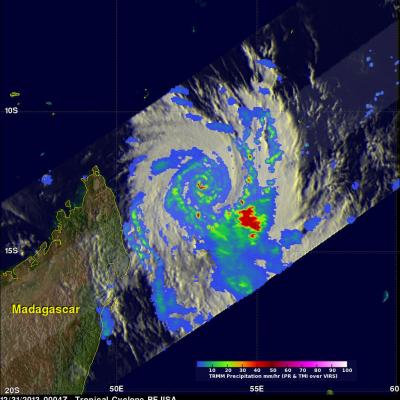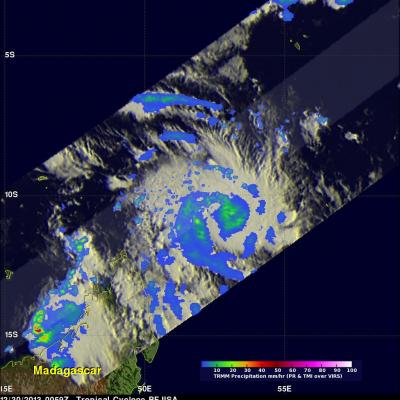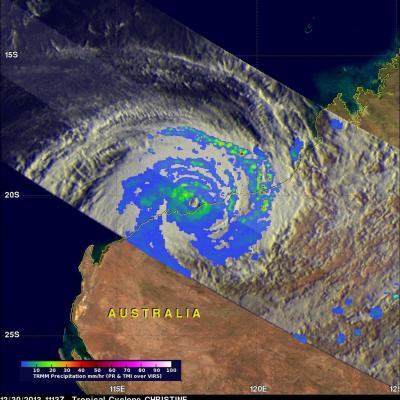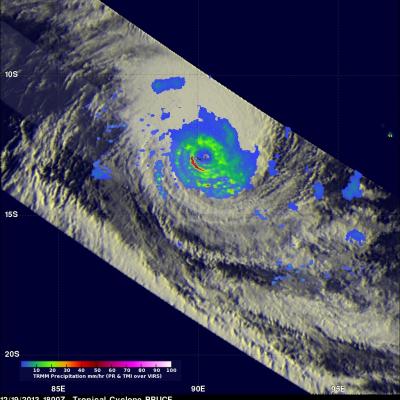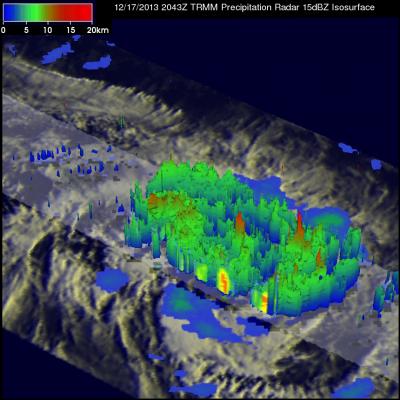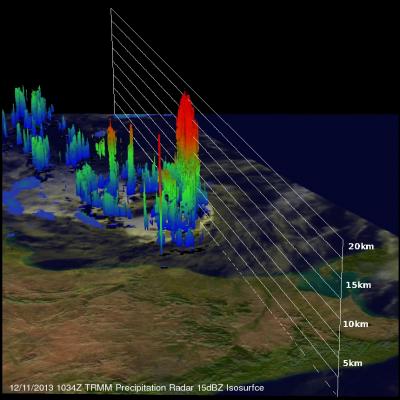Two Southern Hemisphere Tropical Cyclones
Today the TRMM satellite passed above two tropical cyclones in the southern hemisphere. On January 10,2014 at 0117 UTC TRMM had a good daytime view of intensifying tropical cyclone IAN in the south Pacific Ocean east of Fiji with wind speeds over 90kts (~104 mph). Then at 0724 UTC TRMM passed directly above tropical cyclone Colin in the south Indian Ocean that was also intensifying with wind speeds estimated to be above 35kts (~40 mph). Rainfall derived from TRMM's Precipitation Radar (PR) and Microwave Imager (TMI) data was overlaid on Visible/Infrared images from the Visible and InfraRed


